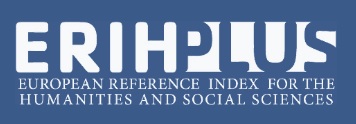Do Lodging Taxes Maximize Tax Revenue? Evidence from Ten U.S. Cities
Abstract
Keywords
References
Alfano, V., De Simone, E., D’Uva, M., Gaeta, G.L. (2022). Exploring motivations behind the introduction of tourist accommodation taxes: The case of the Marche region in Italy. Land Use Policy, 113, 105903. https://doi.org/10.1016/j.landusepol.2021.105903
Benkard, C.L., Yurukoglu, A., Zhong, A.L. (2023). Concentration in product markets. NBER Working Paper 28745, http://www.nber.org/papers/w28745.
Brauning, F., Fillat, J.L., Joaquin G. (2023). Cost-price relationships in a concentrated economy. Federal Reserve Bank of Boston working paper 23-9, April. https://www.bostonfed.org/publications/research-department-working-paper/2023/cost-price-relationships-in-a-concentrated-economy.aspx
Butters, R.A., Hubbard, T.N. (2023). Industry structure, segmentation and quality competition in the U.S. hotel industry. Journal of Industrial Economics, 71(2), pp. 491-537. https://doi.org/10.1111/joie.12330
Cho, S., Lee, G., Rust, J., Yu, M. (2020). Optimal dynamic hotel pricing. Georgetown University, November 2.
https://congress-files.s3.amazonaws.com/2022-07/hp_abridged2.pdf
Corgel J., Lane, J., Woodsworth, M. (2012). Hotel industry demand curves. Journal of Hospitality Financial Management, 20(1), article 6. https://doi.org/10.1080/10913211.2012.10721893
Duran-Roman, J.L., Cardenas-Garcia, P.J., Pulido-Fernandez, J.I. (2020). Taxation of tourism activities: A review of the top 50 tourism destinations. Revista de Economía Mundial, 55, pp. 49-78
DOI: http://dx.doi.org/10.33776/rem.v0i55.3838
Durbarry, R. (2008). Tourism taxes: Implications for tourism demand in the UK. Review of Development Economics, 12(1), pp. 21-36.
https://doi.org/10.1111/j.1467-9361.2008.00432.x
Dutkowsky, D.H., Sullivan, R.S. (2014). Excise taxes, consumer demand, over-shifting, and tax revenue. Public Budgeting & Finance, 34(3), pp. 111-125.
Farronato, C., Fradkin, A. (2022). The welfare effects of peer entry: the case of Airbnb and the accommodation industry. American Economic Review, 112(6), pp. 1782-1817. DOI: 10.1257/aer.20180260
Hazinski, T., Ferguson, M. (2023). 2023 HVS Lodging Tax Report—USA. September 25. https://www.hvs.com/article/9749-2023-HVS-Lodging-Tax-Report-USA
IBIS World (2024). Hotels & Motels in the US - Market Size, Industry Analysis, Trends and Forecasts (2014-2029), January.
https://www.ibisworld.com/united-states/market-research-reports/hotels-motels-industry/
Li, H., Srinivasan, K. (2019). Competitive dynamics in the sharing economy: an analysis in the context of Airbnb and hotels. Marketing Science, 38(3), pp. 365-391. https://doi.org/10.1287/mksc.2018.1143
Miravete, E.J., Seim, K., Thurk, J. (2018). Market power and the Laffer curve. Econometrica, 86(5), pp. 1651-1687. https://doi.org/10.3982/ECTA12307
Shetty, M. (2008). The lodging industry market structure. Hotel News Resource, April 29. https://www.hotelnewsresource.com/article32324.html#:~:text=The%20market%20structure%20of%20lodging,are%20few%20barriers%20to%20entry.
Stiglitz, J.E. (2015). In praise of Frank Ramsey’s contribution to the theory of taxation. Economic Journal, 125(583), pp. 235-268.
https://doi.org/10.1111/ecoj.12187
Teiusan, S.C. (2023). A bibliometric analysis of research on tourism taxation. Revista de Turism, 36. http://revistadeturism.ro/rdt/article/view/625/365

This work is licensed under a Creative Commons Attribution 3.0 License.















